Results 3,721 to 3,730 of 12095
Thread: Anandtech News
-
03-11-14, 03:30 PM #3721
Anandtech: Valve Publically Releases "ToGL" Direct3D-to-OpenGL Shim
Though firmly rooted in the Microsoft technology camp for much of their history, in the past few years Valve has been expanding their reach to additional platforms and technologies. This started with porting their own games to OpenGL based OSes – first Mac OS X and later Linux – and of course more recently their efforts in rolling their own Linux distro with SteamOS. Throughout all of these processes Valve has been relatively open about what they’re doing and how they’re doing it, and this week they’re getting a bit more open on the API side.
Posted this week to GitHub, Valve has released the source code behind their “ToGL” shim to the public. ToGL is the translation layer Valve uses to bring OpenGL support to their games, essentially emulating a limited subset of the Direct3D 9.0c API and translating those calls to OpenGL. It is implemented within the game binary itself (this isn't an external wrapper), so this is primarily a tool for game developers. And although not particularly common, translation layers such as ToGL and even bigger full-on wrappers are often used to bring big budget multiplatform games to OpenGL platforms, as the PC ports of many games are still primarily coded against Direct3D and native OpenGL renders are sparse.
This release of ToGL comes from Valve’s latest game, DOTA2, with Valve pulling ToGL directly from said game’s source tree. Valve’s release notes, though short, give us a quick idea of just how large of a subset of Direct3D 9.0c ToGL supports. Since it’s not a full Direct3D 9.0c implementation, only part of Shader Model 3 is offered; multiple render targets (which are heavily used these days) are supported, while vertex texture fetch is not. Meanwhile we can see that Valve has been doing shader translation (HLSL-to-GLSL) at a bytecode level, rather than doing the translation at a higher level.
Finally, though Valve’s notes don’t specifically state why they’re releasing ToGL to the public at this time, it’s readily apparent from their releasing it in open source form and their choice of license that they’re looking to spur further Mac OS X and Linux ports of games. By opening up ToGL to other developers and making it free to use via a BSD-style license, developers building games targeting Direct3D 9.0c have an avenue for making the porting of the graphics layer significantly easier.
Though with that in mind, it remains to be seen just how productive it will be to release a Direct3D 9 shim at this point in time. With Windows XP’s retirement next month, all supported versions of Windows will support Direct3D 11 (feature levels not withstanding), so the number of games being written against Direct3D 9 will be low. On the other hand this would still greatly speed the porting of older games, which could help to further build up the list of games available on SteamOS.
More...
-
03-12-14, 08:30 AM #3722
Anandtech: ASUS Chromebox Review
I see a lot of potential in Google’s Chrome OS. Even today, I have no issues recommending the platform to friends and family with basic computing needs but who want something more traditional than a smartphone or tablet.
Once you get beyond its somewhat awkward learning curve (e.g. there is no traditional Office, you can’t run most of what you download from the web/email attachments, etc...), it’s an OS that is incredibly easy to support if you’re the appointed IT-person in your family/friend group. Sandboxing and automatic updates keep the platform secure. The inability to run most things outside of a web browser keeps clueless users from getting themselves into trouble by running things they shouldn’t. Then there’s the fact that many devices running Chrome OS tend to deliver better user experiences, at least as far as browsing is concerned, compared to similarly priced entry level Windows PCs. HP’s Chromebook 11 is a great example of what can be done. Although HP fumbled its SoC choice, the display, keyboard, storage and chassis in the Chromebook 11 were expertly chosen. For basic web use, I’ve found myself recommending Chromebooks over traditional notebooks more often than not.
I don’t appear to be an outlier in my recommending Chromebooks. Amazon’s top two best selling notebooks are both Chromebooks, and Google’s presence on that list is nothing new. The big question is whether or not the same success at the entry level of the notebook market can apply to desktops running Chrome OS. To find out Google partnered up with a number of OEMs, including ASUS, to go after the entry level Windows desktop market.
More...
-
03-12-14, 11:30 AM #3723
Anandtech: NVIDIA’s GeForce 800M Lineup for Laptops and Battery Boost
Last month NVIDIA launched the first of many Maxwell parts to come with the desktop GTX 750 and GTX 750 Ti, which brought a new architecture to NVIDIA’s parts, but one that isn’t radically different from the previous generation’s Kepler. While the features may be largely the same, however, NVIDIA did come out with a renewed focus on efficiency. That renewed focus on efficiency is nice and all on the desktop, but in my opinion where it’s really going to pay dividends is when we get the mobile SKUs. Today, NVIDIA is announcing details of their top-to-bottom 800M SKUs, so while Maxwell debuted on desktop as a 700 series part, for laptops NVIDIA is incrementing the model numbers. Read on to see what’s in store for mobile gamers that don’t want to use a tablet or smartphone.
More...
-
03-12-14, 03:00 PM #3724
Anandtech: NVIDIA Announces Legacy Support Plans For D3D10 Generation GPUs
All good things must come to an end, and for NVIDIA’s Direct3D 10 generation GPUs that end is just about here. NVIDIA has posted a document to their support website this week announcing their plans to drop driver support for their D3D10 GPUs, and how future support for those products will work.
With the forthcoming Release 340 driver set NVIDIA will be moving their D3D10 GPUs to legacy status, which will make R340 the final driver branch to support these products. The branch after R340, R343, will drop support for D3D10 GPUs, leaving Fermi, Kepler, and the new Maxwell as the only GPU families supported in newer driver releases.
As for R340 and their D3D10 GPUs, while the move to legacy status means that these GPUs will no longer receive performance optimizations and new driver features, NVIDIA does leave the door open to further bug fixes with further R340 releases. Officially R340 will support these GPUs until April 1, 2016, so NVIDIA is planning on continuing to support these products in some fashion up until then. But it’s worth noting that legacy products aren’t on a planned driver update schedule like current generation products are, so bug fix drivers are issued on an as-needed basis. For comparison, NVIDIA’s DX9 GPUs, which went legacy back in October of 2012, have received a driver update as recently as February of 2013.
Meanwhile it’s worth pointing out that this move to legacy status will be for all of NVIDIA’s product lines using these GPUs: GeForce, Quadro, and Tesla. So along with GeForce cards ranging from the GeForce 8800GTX to the GeForce 405, the move to legacy will also impact NVIDIA’s first-generation Tesla 1000 parts, the Quadro FX series, and more. The extensive list of affected products can be found in NVIDIA’s announcement.
On a tangential note, compared to NVIDIA’s legacy D3D9 products it looks like NVIDIA’s D3D10 products will have received roughly the same length of mainstream support. With GeForce 8800GTX turning 8 this year and GeForce 405 turning 4, NVIDIA’s D3D10 products have been supported for between 4 and 8 years. This is about a year less than D3D9 on the low end and roughly the same length of time on the high end. Unsurprisingly, those products from earlier in the generation have received a longer period of support overall, due to the fact that NVIDIA retires products whole generations at a time.
Wrapping things up, today’s retirement announcement means that D3D10 GPUs as a class are just about at the end of their lives. With AMD having moved their D3D10 GPUs to legacy status back in 2012 and now NVIDIA in 2014, both of the major dGPU vendors have put their pre-D3D11 products out to pasture. This leaves Intel as the only vendor with D3D10 parts still receiving mainstream support, as Intel did not gain support for D3D11 until Ivy Bridge in 2012.
As such it will be interesting to see how forthcoming game development is impacted by this. With D3D10 GPUs now existing as legacy products, and with the current-generation game consoles being D3D11 based, will developers as a whole continue to support D3D10 GPUs after 2014? We will have to see what the future brings.
More...
-
03-12-14, 03:00 PM #3725
Anandtech: Razer Announces the New Razer Blade: 14” QHD+ with GTX 870M
Gaming based laptops have boomed in recent months and quarters. There are plenty of companies getting their feet wet and some are trying to push the limits. QHD+ is starting to look like a new standard in the higher end laptops, as seen in the 13.3” Lenovo Yoga 2 Pro and the 15” Dell XPS 15 (read Jarred’s review of the XPS 15 here), and Razer are deciding to go with something similar for the 2014 Razer Blade refresh.
Aside from the touchscreen 14” QHD+ panel, which is an IGZO panel rather than the pentile screen seen on the Lenovo, the New Razer Blade 2014 edition is equipped with an Intel Core i7-4702HQ quad core processor, 8GB of DDR3L-1600 and the recently announced NVIDIA GTX 870M. That sounds like a beefy machine to begin with, and beats out the old Razer Blade that only had a 1600x900 panel and a GTX 765M.
This new device measures 345x235x17.9mm, which Razer likes to point out is smaller than a dime. The machine isn’t the lightest, weighing in at 4.47 lbs (2.03 kg), but we do get an Intel 7260 2x2 802.11ac WiFi module in there as well as a choice of SATA M.2 drives. Razer is accepting preorders based solely on the size of the M.2 drive: $2200 for a 128GB, $2400 for 256GB and $2700 for 512GB.
The keyboard is fully backlit in green, and the laptop uses a 70Wh battery with a 150W power adapter. This makes sense, given the CPU is a 37W part and the GPU is set to be rated around 100W. This would reinforce the image on Razer’s website of dual fans in the chassis. Connectivity comes via three USB 3.0 ports, a HDMI 1.4a port and headphone/microphone jacks.
Powering 5.76 million pixels in QHD+ rather than 2.07 million of 1080p means an almost three-fold increase, and 4x over the older Razer Blade at 900p. That begs the question as to what frame rates we might see at 3200x1800 in this new device. I doubt that BF4 will be running at some high quality settings at 3200x1800, but I like the fact that the industry is headed to higher density panels in a smaller chassis.Razer Blade 14-Inch Specifications 2013
(Current)2014
(New)Processor Intel Core i7-4702HQ
(4x2.2GHz + HTT, Turbo to 3.2GHz, 22nm, 6MB L3, 37W)Intel Core i7-4702HQ
(4x2.2GHz + HTT, Turbo to 3.2GHz, 22nm, 6MB L3, 37W)Chipset Intel HM87 Intel HM87 Memory 8GB DDR3L-1600 8GB DDR3L-1600 Graphics NVIDIA GeForce GTX 765M 2GB GDDR5
768 CUDA cores,
797MHz/863MHz core
4GHz memory
128-bit memory bus
Intel HD 4600 Graphics
(20 EUs, up to 1.15GHz)NVIDIA GeForce GTX 870M 3GB GDDR5
1344 CUDA cores,
941 MHz core
5 GHz memory clocks
192-bit memory bus
Intel HD 4600 Graphics
(20 EUs, up to 1.15GHz)Display 14" LED Matte 16:9 900p
AU Optronics AUO103E14" IGZO 16:9 3200x1800
Multitouch with LED BacklightHard Drive(s) Samsung PM841 256GB
mSATA 6Gbps SSD128GB / 256GB / 512 GB
SATA M.2Optical Drive - - Networking Killer Wireless-N 1202
Dual Band 2x2 802.11a/b/g/n
Bluetooth 4.0Intel Wireless-AC 7260HMW
Dual Band 2x2 802.11a/b/g/n/ac
Bluetooth 4.0Audio Realtek ALC269 HD audio
Stereo speakers
Combination mic/headphone jack? Battery 70Wh 70Wh Front Side - - Right Side USB 3.0
HDMI 1.4a
Kensington lockUSB 3.0
HDMI 1.4a
Kensington LockLeft Side AC adapter
2x USB 3.0
Combination mic/headphone jackAC adapter
2x USB 3.0
Combination mic/headphone jackBack Side - - Operating System Windows 8 64-bit Windows 8.1 64-bit Dimensions 13.6" x 9.3" x 0.66"
345mm x 235mm x 16.8mm13.6" x 9.3 " x 0.70"
345mm x 235mm x 17.9mmWeight 4.1 lbs
1.88 kg4.47 lbs
2.03 kgExtras Webcam
USB 3.0
Killer Networks wireless networking
Backlit anti-ghosting keyboard2.0 MP Webcam
USB 3.0
Intel 2x2 802.11ac
Backlit anti-ghosting keyboardWarranty 1-year limited ? Pricing $1,799 Starting at $2200 for 128GB
Because I have been lax at being a proper gamer these past few years, my eyes would really open to a version of this without the discrete GPU – give me a high density, top quality panel with a lot of battery life and my usual OS, and all is good. However for running around to a LAN, it would either be an SFF machine or something like this that would fit right in.
Razer is taking pre-orders for shipping next month. In an interview with TechCrunch, Razer CEO Min-Liang Tan explained how the company has listened to their customers, and aim to help alleviate the previous issues regarding keeping up with demand. Markets like Russia and Taiwan will follow after North America.
Gallery: Razer Announces the New Razer Blade: 14” QHD+ with GTX 870M





More...
-
03-13-14, 04:30 AM #3726
Anandtech: CeBIT 2014: Sapphire Shows Two R9 290X 8GB GDDR5 GPUs
Back when the 8800GT was launched, 512MB of video memory is all we needed. To have 2GB, 3GB or 4GB on a video card seemed like overkill. Fast forward several years and those latter capacities are now the norm for anyone spending $100+ on a discrete graphics card. So does an 8GB graphics card seem like overkill today? When I look at 4K UHD panels slowly entering the market, and the prevalence for high end gamers to run multi-monitor setups, I would postulate that 8GB of video memory is only the start, especially as memory manufacturing and die shrinking continues. To that end, and perhaps to the delight of AMD-based compute, Sapphire showed off two R9 290X models at CeBIT this year to Kitguru, both with 8GB of GDDR5.
First up is the Vapor-X model, featuring a 2.5 slot cooler with three fans in a blue shroud. The second is the Toxic Edition, which to the eye looks identical apart from the yellow coloring.
Video outputs seem to be a dual DVI, HDMI and DisplayPort. No word on GPU or memory frequencies; however given their branding I would expect the Toxic to be a higher clocked part. For reference, the R9 280X Toxic is at 1100 MHz core (1150 MHz boost), whereas the R9 280X Vapor-X is at 950 MHz core (1070 MHz boost). Ryan reviewied the R9 280X Toxic at the end of last year - read his review here. These are also set to be limited edition models, pricing and release date as yet unknown but due to the higher memory cost these cards will pack a price premium. The on/off button at the rear of both of these cards may be their dual VBIOS functionality - if users are in a UEFI environment, this will switch the BIOS to the UEFI mode for faster booting.
It is a shame that these are going to be limited edition cards, as it does offer that bridge between a high end consumer compute card with a lot of memory and the full-blown AMD FirePro branding. Even saying that, the number of FirePro cards with more than 8GB is rather limiting – an S10000 12GB was announced at the end of last year and further down the product stack there are a few 6 GB models.
Source: Kitguru [1,2]
Gallery: CeBIT 2014: Sapphire Shows Two R9 290X 8GB GDDR5 GPUs





More...
-
03-13-14, 06:38 AM #3727
Anandtech: Testing SATA Express And Why We Need Faster SSDs
The Serial ATA International Organization didn't have much to worry about when hard drives were the primary (only) media. The laws of rotational physics ensured hard drive speeds would not increase dramatically and hence updates to the SATA spec were only seldom needed. However, with SSDs that all changed. NAND provided so much lower latencies and higher throughputs that SATA-IO faced an issue: they couldn't keep up with the speed of SSDs. As a result the SATA-IO had to look elsewhere to increase interface bandwidth but at the same time they had to ensure backwards compatibility. SATA Express, a combination of SATA and PCIe, was born as a result. But what exactly is it and how does it perform? Read on to find out.
More...
-
03-13-14, 07:30 PM #3728
Anandtech: AMD Teases Forthcoming Dual-GPU Video Card
It looks like AMD is starting up another one of their tongue-in-cheek video card marketing campaigns, if the latest package to arrive on my doorstep is any indication.
In an envelope from AMD’s marketing department labeled “Top Secret”, AMD included in a single picture (of myself) with the text “Wouldn’t you agree that two is better than one?” On the backside is a Twitter hashtag, #2betterthan1.
Given the current state of AMD’s 200 series product lineup and the fact that it has been just under a year since the Radeon 7990 launched, this is presumably the start of AMD’s marketing campaign for the obligatory dual-GPU 200 series card. AMD’s note doesn’t leave much in the way of details to speculate with, but considering that 7990 was already pushing around a pair of Tahiti GPUs, it seems a foregone conclusion that any new dual-GPU card would be Hawaii based. In which case, considering that Hawaii cards currently approach 300W, it will be interesting to see just what AMD has up their sleeve for fitting a pair of their best GPUs on a single card.
One thing is for certain: AMD never stops with one teaser. So no doubt there will be more information to follow.
In the meantime, to see whether two really is better than one, I made a quick call to the ultimate authority on all things me: my mother. Her response? “Having two sons was great for getting the yard work done, but I paid for it at the grocery store.” So make of that what you will.
More...
-
03-13-14, 08:30 PM #3729
Anandtech: Examining MicroSD changes in Android 4.4
While Samsung Galaxy devices had new restrictions on microSD read/write access, it was hard to say whether this was the start of a trend for all Android OEMs as restrictions on microSD were bypassed by most OEMs, as the vast majority of functionality such as moving apps to microSD were ported to Android 4.x builds. The story is more than just about Android 4.4 though, as the change in microSD functionality happened some time in the 3.x releases of Honeycomb.
Before Honeycomb, Android was heavily reliant upon microSD cards, as the vast majority of smartphones carried forward the storage model from the days of Windows Mobile, with very little internal storage for the OS and its applications. Everything else had to be placed on a microSD card, which meant the OS was useless if the microSD card was ejected. The same was true of most early Android smartphones. This is the model that most everyone is familiar with. Any application could read and write anywhere they wished on the microSD card with appropriate permissions.
The new model arrived with Honeycomb, which placed permission controls on the microSD card. This disallowed any third party application from writing to the microSD card, although they could write to their own private folder on the microSD card, much like how applications can write to their own folder on /data/apps/ but they can't modify any other folder in that directory. With permission to write to external storage, it is possible to read any file on the microSD card that isn’t a private folder, but it isn’t possible to write to any other folder. The permission to write to any folder on the microSD card is now limited to system/OS applications only.
This means that while Google Play Edition devices like the LG G Pad and Samsung Galaxy S4 followed the behavior that was set by Google as far back as Honeycomb, devices like the Galaxy S4 with TouchWiz never had such restrictions on microSD, custom ROMs altered the restrictions that Google had placed, and in general, microSD behavior continued to work as it did in Android 2.3 for the vast majority of people using Android.
The big news isn’t that Samsung is adopting the change. Rather, it seems that Google is now enforcing this change in microSD behavior across all OEMs. Presumably, this means that the Android CTS (Compatibility Test Suite) now requires compliance with the new system of accessing microSD storage. Based upon user feedback, both Samsung and HTC devices with microSD slots are no longer capable of allowing user applications to write to folders outside of the application’s private folder. While it was once hard to say whether this would only be followed by a few OEMs, it seems that this standard is well on track to universal adoption.
This sounds like a major issue, but Google has clearly planned this out, as the Storage Access Framework feature in Android 4.4 was clearly made as a compatibility shim of sorts. The SAF allows file manipulation of data on the microSD slot and can provide access to data on the microSD card without allowing free access of all data on the microSD card. What seems to throw a wrench into everything is that the primary internal storage partition still has the same behavior as microSD cards before Honeycomb. This means that any data in the /data/media/ directory has no permission control. It seems that Google is struggling in this case, because this odd inconsistency is needed to maintain backwards compatibility with applications that still assume that /sdcard/ can be written to in any manner, and any file on /sdcard/ can be read as well. At any rate, an example of the SAF UI can be seen below.
Some may say that this is a clear attempt to kill off expandable storage and attempt to force cloud storage upon more users, but recent events have made it clear that this is a move targeted at OS security, as the popular chat application Whatsapp could have all messages easily accessed by any application that could read the SD card. On 4.4, despite the lack of security on the part of the developer, such a security breach wouldn’t be possible. However, whether this gain in security is worth the transition period between a robust permissions system for microSD/FAT systems on Android and the status quo is another question entirely, and is one that may not have an answer.
More...
-
03-14-14, 05:31 AM #3730
Anandtech: Seagate Business Storage 8-Bay 32TB Rackmount NAS Review
Seagate's acquisition of LaCie in 2012 made quite a bit of sense as most of their product lines were complementary in nature. However, they had a bit of an overlap in the NAS market, particularly in the SOHO ARM-based segment. Early last year, we reviewed the LaCie 5big NAS Pro, a desktop form factor x86 NAS with an embedded Linux OS developed in-house by LaCie. With Seagate not having a presence in this space, it was an ideal segment to target with the help of LaCie's expertise. As a result, we have the Business Storage 1U rackmount lineup. Read on for our review of the fully populated 8-bay variant.
More...
Thread Information
Users Browsing this Thread
There are currently 4 users browsing this thread. (0 members and 4 guests)




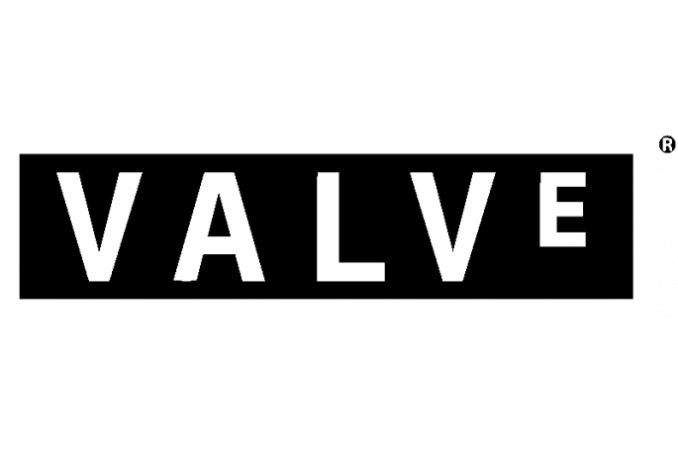

 Quote
Quote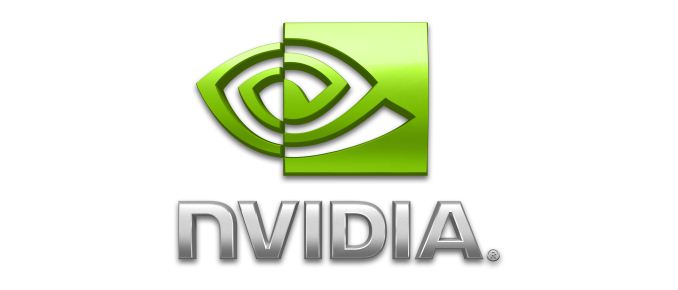
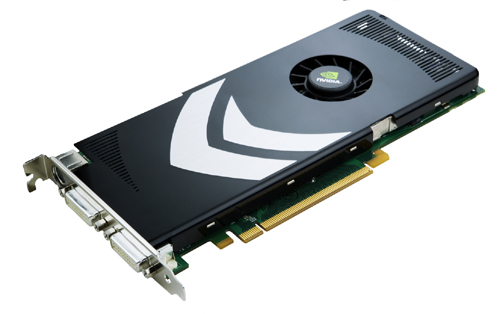
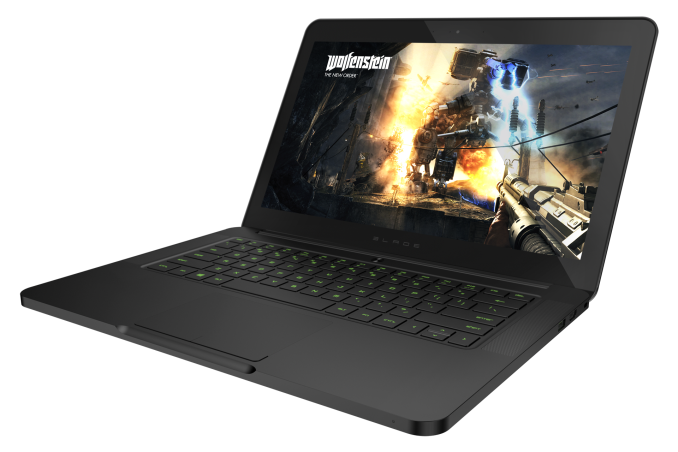
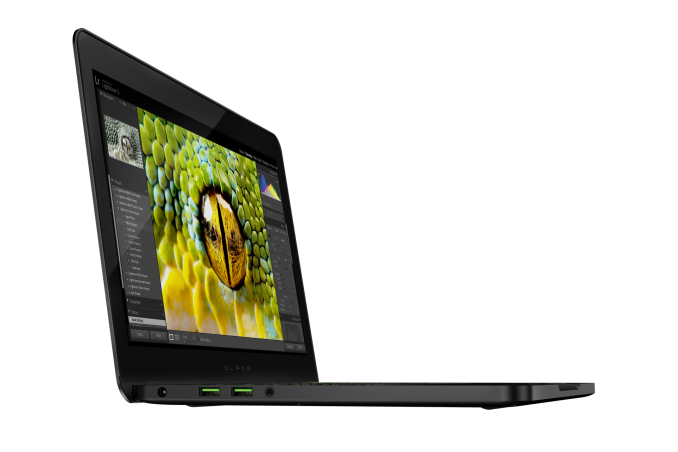
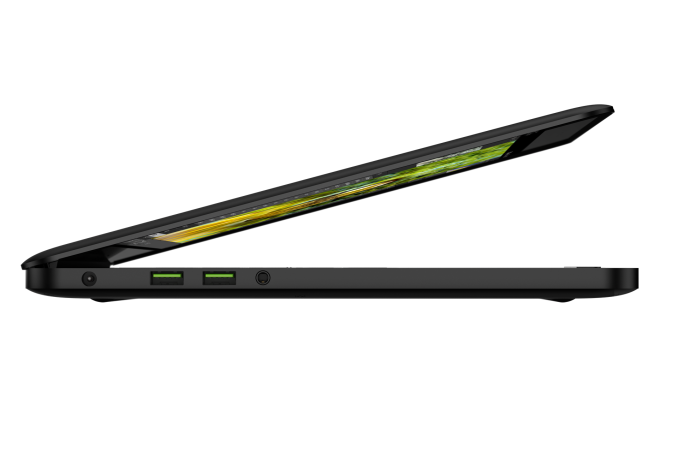
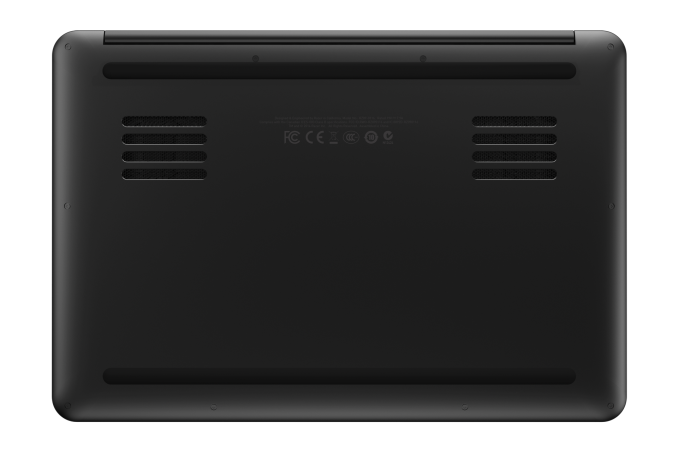




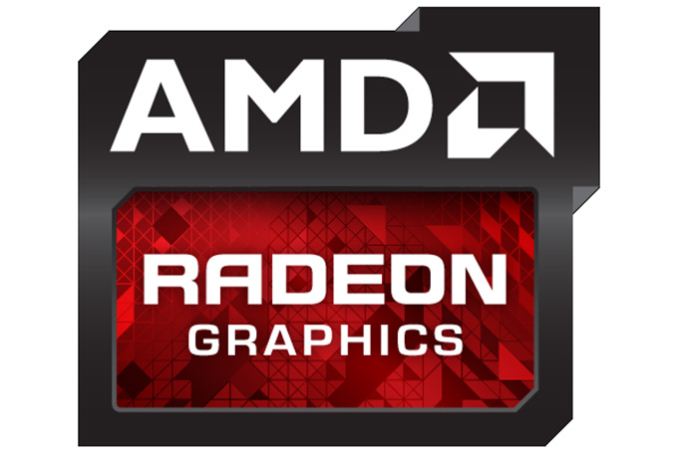


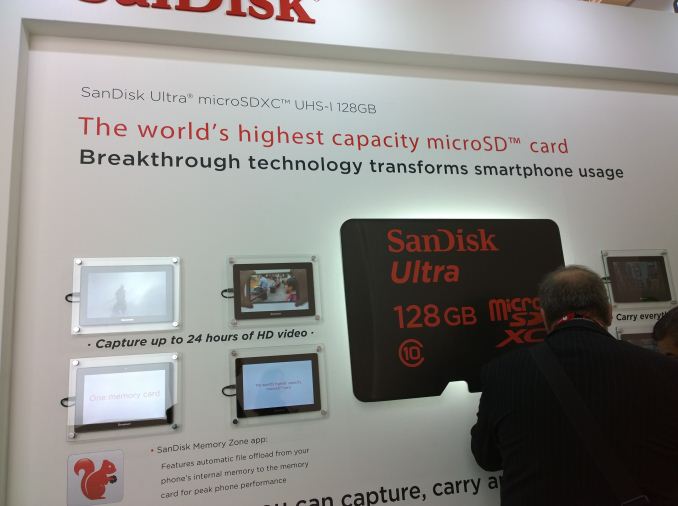

















Bookmarks